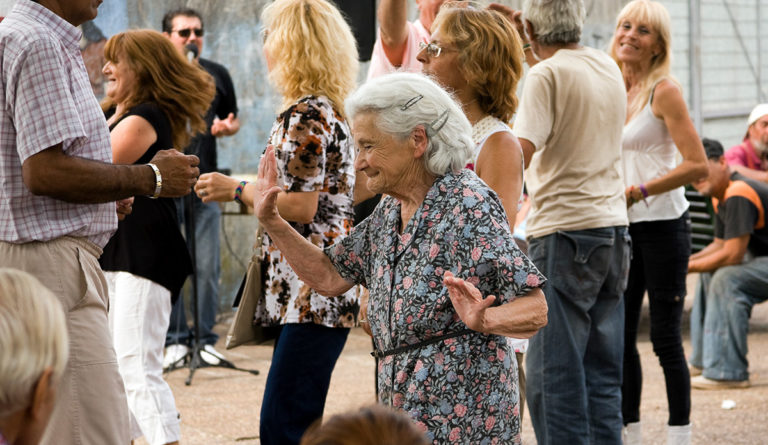Rethinking Successful Aging: The Happiness of Older Hispanics
Hispanics, particularly immigrants, are more satisfied with their lives than any other group of older Americans, including Whites.

Read Time: 3 minutes
Published:
America’s older population is expected to double in the next three decades. Aging Hispanics will experience the most dramatic growth of any group, almost 14 percent. In comparison, the proportion of non-Hispanic Whites will decrease by more than 20 percent during this same period. If projections are accurate, by 2050 Hispanics will account for 20 percent of all Americans age 65 and over.
Hispanics are not only aging faster than other groups, they also tend to live longer, which calls for a better understanding of what contributes to their successful aging. If we use traditional metrics such as absence of physical and cognitive impairments, life engagement, or wealth, Hispanics tend to be less “successful” than typical baby boomers. Hispanics tend to have greater difficulty satisfying basic needs and protecting themselves from adverse life circumstances compared to non-Hispanic Whites. This cumulative disadvantage leads to worse social, economic, and health-related outcomes late in life.
…what would happen if, instead of imposing a set of pre-determined indicators of successful aging, we let people use their own standards?
My colleagues and I were curious about what would happen if, instead of imposing a set of pre-determined indicators of successful aging, we let people use their own standards? This is important because people may have different expectations of what aging well means, and these expectations may dictate what they strive for later in life.
We decided to study how satisfied or happy older adults in America are, with the goal of explaining potential disparities in life satisfaction across groups. Robust evidence shows that, when people are asked how satisfied or happy they are with their lives, individuals evaluate their life as a whole, using what is important to them as metrics. As a result, life satisfaction has been widely used as a reliable indicator to capture people’s contentment with their own circumstances.
We found that Hispanics, particularly immigrants, are more satisfied with their lives than any other group of older Americans, including Whites.
We found that Hispanics, particularly immigrants, are more satisfied with their lives than any other group of older Americans, including Whites. This was unexpected. Older Hispanic immigrants in our study had worse health, and fewer social and economic resources than White elders. These results did not support theories of cumulative disadvantage and subjective wellbeing later in life. Our findings do, however, align with the Hispanic paradox. Despite limited socioeconomic resources, Mexicans in the United States tend to have better health outcomes late in life than wealthier Whites.
Strong family support is one of the potential explanations for the paradox. Hispanic immigrants in our study co-resided with their adult children more often than any other group. Interestingly, while living with their children made older Hispanics happy, it had the opposite effect among older Whites. Co-residing with children actually decreased the life satisfaction, or happiness, of elder Whites.
Our research revealed two main points. First, life satisfaction may be a complementary indicator of what it means to be successful later in life. Second, the drivers of happiness vary across individuals and may be rooted in cultural values.
This post is based on the article authored by Rocío Calvo, Dawn C. Carr, and Christina Matz-Costa.
Feature image: People dancing ‘cumbia,” Magaiza/iStock, for illustrative purposes only.



